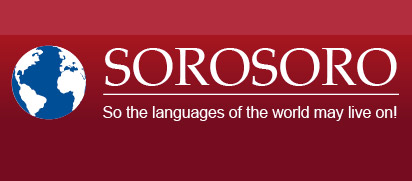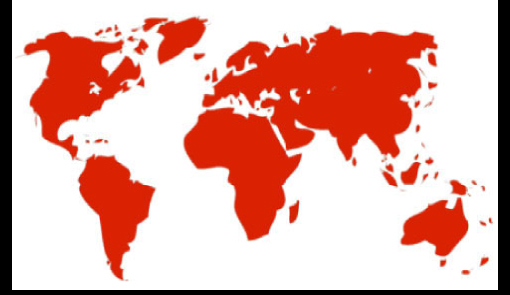Print  |
|

Krenak
Data collected by the UNICEF
Data on the Krenak language
Alternative names: Krén, Botocudo, Eastern Botocudo, Krenaque, Aimoré, Aymoré, Nakrehé, Uti-krag, Munhãjirum miñajirum, Morun, Gueren.
The name “Botocudo” was used by the first Portuguese colonists to refer to several different populations. It is in fact a reference to the lip plates worn by members of those groups.Krenak shall therefore not be mistaken for Kaingang or Xokleng, also called “Borocudo” at the time. Krén is the autoethnonym.
Main dialects: It is difficult to talk about Krenak dialects today given the small number of speakers. It is possible that the names nakrehé, uti-krag and munhãjirum refer to old variations of Krenak. Gueren and Aymoré, now extinguished, are sometimes considered as variations of the same “Botocudo” language, such as Krenak. It appears that some Krenaks currently refer to their language under the name Borun, which sometimes also referred to Gueren.
Classification: Macro-Jê, Krenak (or Botocudo) languages.
We are following the classification given by Aryon Rodrigues (1999).
The association of the family of Jê languages to the Kamakã, Maxakalí, Krenák, Pur, Kariri families and the Guato and Rikbaktsa isolated languages in a “super-family” called “Macro-Jê” is an hypothesis now considered as highly possible despite the lack of data on some of those languages.
The group of Krenak (or Botocudo) languages is sometimes considered as a vernacular group among which two of the three main variations are now dead: Aymoré and Gueren. Others consider that it is a group of three different languages although they are close. Given the current knowledge regarding Gueren and especially regarding Aymoré, it is impossible to settle this issue.
Geographic area: Brazil, State of Minas Gerais, left bank of the Doce river, around the towns of Ipatinga, Diamantina and Governador Valadares.
Number of speakers: The 2010 census of the FUNASA established an “ethnic” population revolving around 350 people but very few of them speak the language. According to Seki (1985), “less than 20 elderly people would still have some knowledge of the language”. The ISA talks about a dozen speakers, mainly old women.
Status of the language: No official status.
According to Linguamón : “Portuguese is Brazil’s only official language. The country’s only linguistic legislation concerning other tongues refers to schooling and is restricted to bilingual and intercultural primary education (exclusively in indigenous communities), although there are actually few trained bilingual teachers.”
Vitality and Transmission:
According to the UNESCO, the language is “critically endangered”, on the verge of disappearing. Speakers are very old and the younger generations are monolingual in Portuguese.
Historical observations
Nowadays, the Krenak are the last group of Eastern Botocudos. They live on a tiny territory which they struggled to obtain.
Before colonisation, the Krenak were semi-nomad hunter-gatherers (and fishermen) who lived in the forests on the Atlantic coast of the current Brazil, in the area of All Saints’ Bay. They were driven out of the area by the Tupi and settled on the banks of the Doce river.
When European colonists settled in the region, the Krenak were one of the first native populations of Brazil who resisted colonisation the most. They were the victim of very negative representations by the colonists, accused of cannibalism (which has ever been proven), of being violent and rebellious towards civilisation. The Portuguese colonial government started several “fair wars” against them in order to bring peace and force them to settle in the beginning of the 19th century.
During the 20th century, they have continuously been the victim of power extortion, confined and moved, the most rebellious of them imprisoned in “centres for indigenous re-education” and their territory has been occupied by force. In 1971, they were given a 4,000 hectare reservation on the Rio Duce, but the governor at that time took it back and moved them to Fazenda Guarani, without any river to fish from or clay for pottery, where other ethnic groups also lived (mainly Pataxo and Guarani people).
As they couldn’t survive in those conditions, a part of the Krenak people decided to settle back on the banks of the Rio Doce, on a tiny 68 hectare territory. Only in 1997 was the 4,000 hectare territory, originally given legally in 1971, officially given back to them.
The main challenge the Krenak have to face today is to survive economically and culturally on this poor and limited territory, its integrity being threatened by the farms and inhabitants of the surrounding cities who aren’t too pleased about it.
For more information on the Krenak, see pages dedicated to them on the must-see Povos Indígenas no Brasil website (in English and Portuguese).
Sources
De Castro Alves, Flávia (2010). Brasil no Amazónico. In « Atlas sociolingüístico de pueblos indígenas en América Latina », UNICEF. Part 1, pp 265-280.
Fabre, Alain. 2005. Diccionario etnolingüístico y guía bibliográfica de los pueblos indígenas sudamericanos. Available online [11/05/2011]
Online Sources
Data collected by the UNICEF on Krenak [11/05/2011]
Pages dedicated to Krenak on the Povos Indígenas no Brasil website (in English and Portuguese) [11/05/2011]
Pages dedicated to Krenak on the Linguamón website [11/05/2011]
Additional bibliography
Araújo, Ana Valéria 1996. « Por unanimidade, a reconquista da terra Krenak ». En: Carlos Alberto Ricardo (ed.), Povos Indígenas no Brasil 1991/1995: 695-696. São Paulo: ISA.
Pessoa, Katia Nepomuceno 2008. A língua Krenak: fonologia não-linear e aspectos morfossintáticos. Anais do SETA, 1: 389-394.
Rodrigues, Ayron D. 1999. « Macro-Jê » In R.M.W. Dixon and Alexandra Y.Aikhenvald, (eds) The Amazonian languages, Cambridge University Press.
Seki, Lucy F. 1984. Botocudos. Notas para a história de uma supervivência. Campinas, SP (ms.).
Seki, Lucy F. 1985. Descrição da língua Krenak/Nakrehé. Campinas, SP (ms.)
See the Atlas sociolingüístico de pueblos indígenas en América Latina and Fabre (2005) for a complete bibliography.
Please do not hesitate to contact us should you have more information on this language: contact@sorosoro.org








